Features of Gasoline Welding Generators
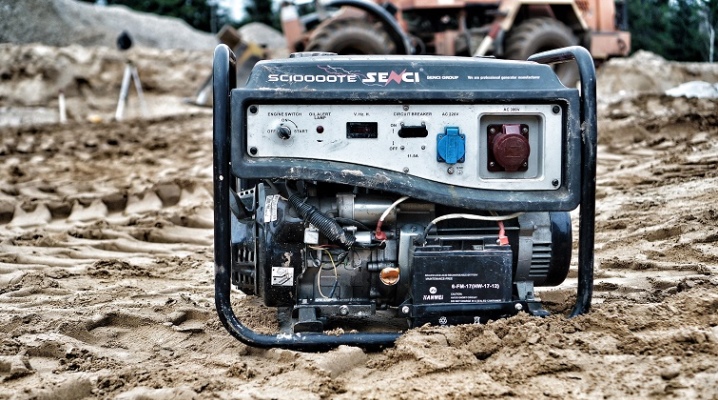
Electric welding is a common method of bonding metal structures. In many applications, electric welding is indispensable already because the strength of the weld - unlike other joining methods - usually exceeds the strength of the materials being bonded.
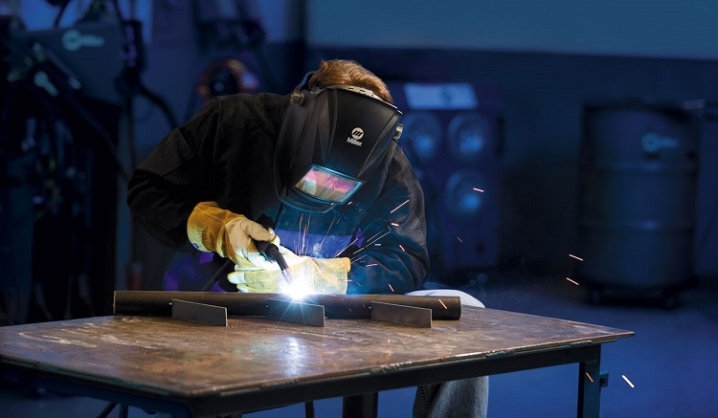
The electric welder obviously requires electricity to operate. But where to get it in the open field? Or at a construction site? It is not always possible to stretch a power line. Autonomous sources of electricity come to the rescue - gasoline welding generators. Even if there is a power line nearby, a gas generator can be more convenient because it is always close to where you work.
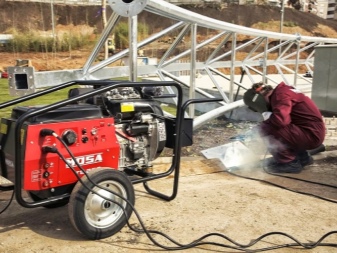

What it is?
Gasoline generators for domestic use have been known for a long time and are widespread - but they are not very suitable for welding. A gasoline welding generator suitable for the operation of an inverter-type apparatus must have a power significantly higher than the usual household unit. In addition, simple gas generators are designed only to power the "active" load: electric heaters, lighting devices, low-power household appliances.

The welding inverter is distinguished not only by its high power, but also by a sharp uneven current consumption. Automation of the generator apparatus for powering the welding inverter must be resistant to work on a powerful "reactive" load. All this determines the design features and subtleties of the operation of such devices.
In addition, before buying a gasoline generator, you will have to decide on the features of welding, for which a portable source of electric current was required.
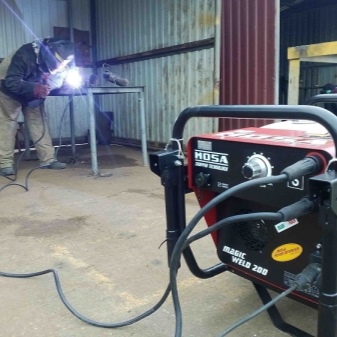
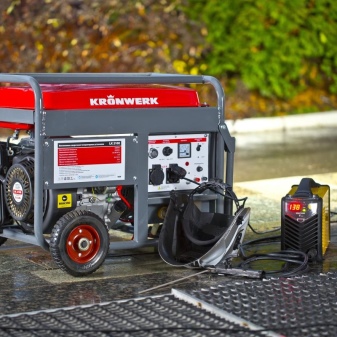
Principle of operation
All electrical generators are roughly the same. A compact combustion engine drives an electric generator. Today, the most widely used are electric generators that generate alternating electric current. Such devices are simpler, more reliable and cheaper than DC generators. Household consumers, which also include welding machines, are designed to be powered by an alternating voltage of 220 V and a frequency of 50 Hz. To maintain these parameters within acceptable limits, mobile gas generators must contain an engine speed governor when the load changes.
Modern stand-alone generators (in order to obtain high-quality power at the output) are built according to a two-stage scheme. First, the voltage from the generator is rectified. This eliminates the influence of the speed of the gasoline engine on the frequency and voltage at the output of the unit.
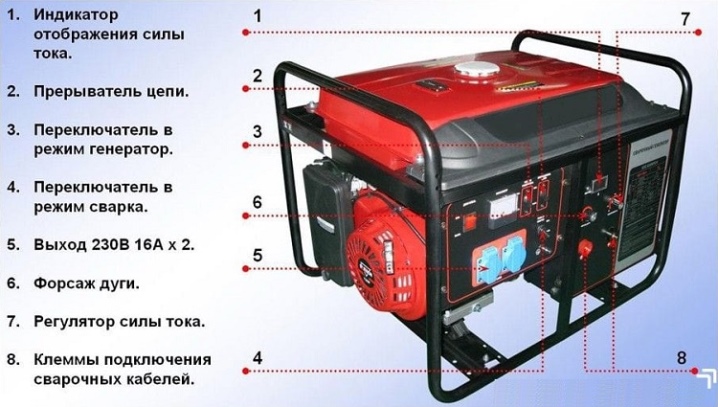
The resulting direct current is converted by an electronic device (inverter) into an alternating current - with a precisely specified frequency and required voltage.
Inverter gas generators provide high-quality power supply to any household appliances. But if the unit is designed exclusively for welding, its scheme is somewhat simplified - such an inverter is initially built according to the scheme of the welding machine. A gas generator with a welding function does not require an intermediate conversion of electricity to the "220 V 50 Hz" standard. This simplifies and simplifies the design, but narrows the scope of the unit.

Review of popular models
To understand how the features of working with a welding inverter affect the appearance, weight, price and versatility of generators for electric welding, consider several manufacturers of popular models of gas generators. Japanese firm Honda initially specialized in the production of motorcycles. This determined the company's rich experience in creating compact, lightweight, but at the same time powerful and reliable gasoline engines. Gradually, the corporation has built a solid reputation in the market for passenger cars, aircraft engines and stand-alone generators.
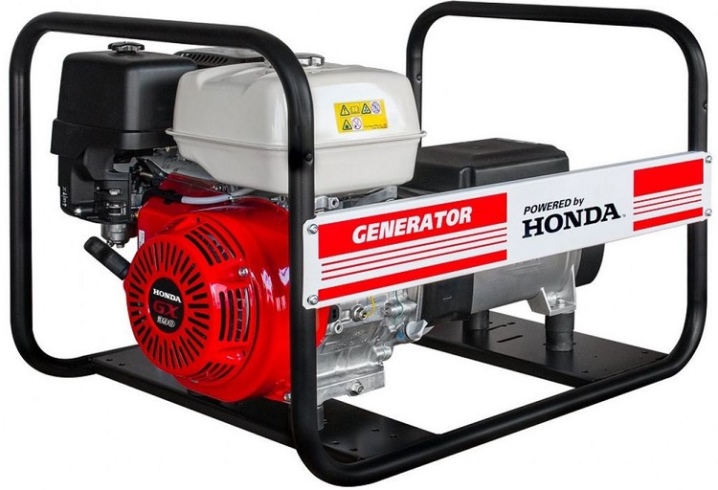
Japanese gas generators are renowned for their quality and reliability. But the prices for them are rather big. For example, model "EP 200 X1 AC" has a power (electrical) of 6 kW. This is sufficient for most welding jobs. The “intelligent” inverter provides flawless maintenance of 220 V voltage and 50 Hz frequency, which allows the generator to be used to power any household appliances. The cost for such generating stations starts from 130 thousand rubles.
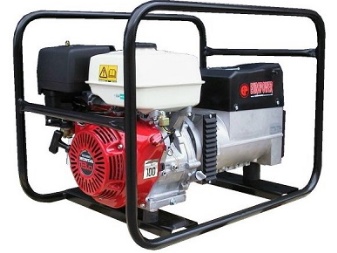
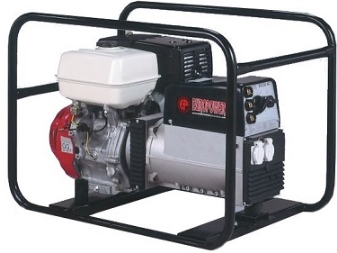
The domestic manufacturer also offers gasoline generators for electric welding. Among professional welders, are gaining more and more popularity electric generators and inverters TSS (sometimes this brand is mistakenly searched for by typing the abbreviation TTS). The TSS group of companies unites both trade organizations and factories that produce welding equipment, automation and autonomous power generators.
The assortment of the company includes both compact inverter generators and heavy installations designed for work in industry.

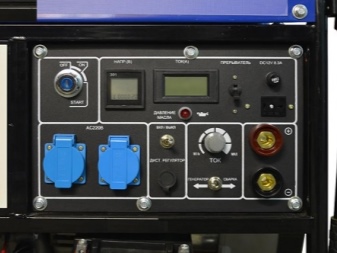
For example, the popular welding generator model TSS GGW 4.5 / 200E-R has an output power of 4.5 kW. The four-stroke air-cooled motor combines compactness and high efficiency. Starting the engine is possible both with a manual starter and from the battery - by pressing a button on the remote control. Such units cost from 55 thousand rubles. For work in a stationary workshop, the TSS PRO GGW 3.0 / 250E-R generator set may be the best choice. Such a unit was originally designed for welding - it contains an inverter welding machine.
Long-term operation with electrodes up to 6 mm in diameter is permissible. In addition, the gas generator has sockets for powering household consumers of 220 V (up to 3 kW) and even a car battery charging station! At the same time, the price - from 80 thousand rubles - makes the device quite affordable for the mass consumer.
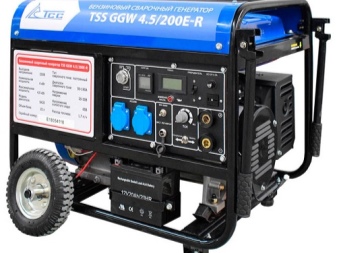
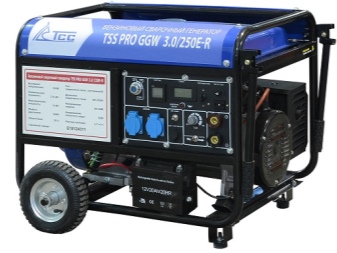
Criterias of choice
For the inverter of the welding machine, it is necessary to select a power source with sufficient power. Such a mobile unit will certainly pull any inverter welding machine. At the same time, for the sake of mobility, it is better to choose a gasoline welding generator of smaller dimensions and weight. Besides, it is necessary to find a balance between the price of the generator itself, the cost of fuel for it and its versatility.
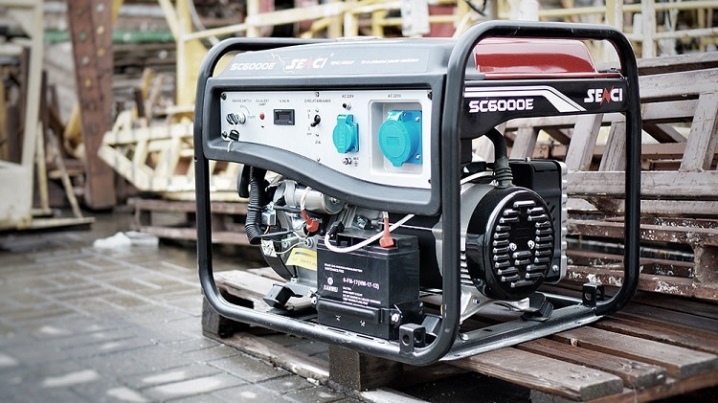
Having at hand a source of direct and alternating current, I would like to find it the most widespread use. Features such as the presence of several 220 V outlets or a built-in 12 V charging station can justify the purchase of a more versatile gas generator - albeit a little more expensive, but with greater capabilities.
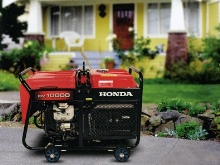

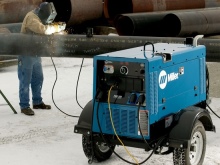
Power
To operate the welding machine, a power source of appropriate power is required. It is generally accepted that a mobile generator is suitable, the rated electrical power of which is one and a half times higher than the rated power of the inverter. But it is better to choose a unit with a double margin. Such a device will not only withstand the most difficult welding jobs, but also come in handy for other purposes. In addition, a more powerful unit, loaded with a moderate consumer, can work for a long time without overheating.
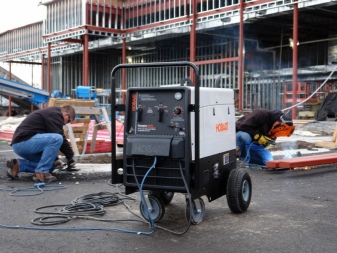

Compact and lightweight, low power gas generators have better mobility.This is indispensable when you need to carry out many welding operations over a large area. But with prolonged welding, work has to be interrupted every few minutes so that the gas generator engine can cool sufficiently. In any case, the required power of a gasoline generator can be roughly determined by the brand of electrodes with which the welder plans to work. For example, you can focus on the following parameters:
- to work with electrodes with a diameter of 2.5 mm, a generator with a capacity of at least 3.5 kW is required;
- Ф 3 mm - at least 5 kW;
- electrodes Ф 5 mm - the generator is not weaker than 6 ... 8 kW.
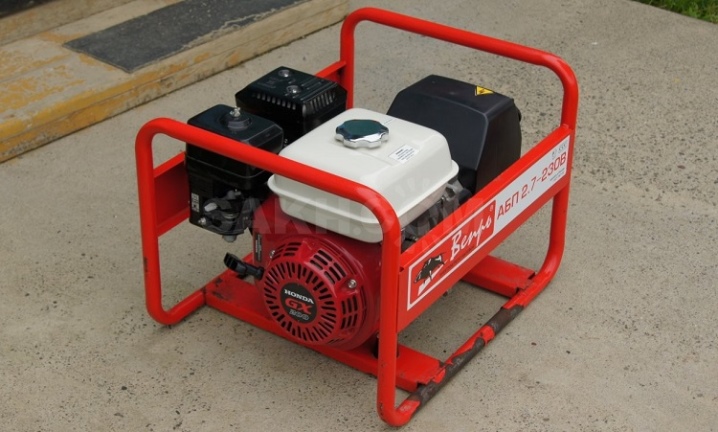
Fuel type
Although generators of different models are referred to as “gasoline” generators, they can use different grades of fuel. Most mobile generators use regular gasoline to operate. This greatly simplifies the refueling of the device. Some models are capable of running on low octane gasoline. Such fuel is significantly cheaper, which reduces the cost of operating the apparatus. In addition, in remote areas, there may not be high-grade gasoline at all, or its quality will be questionable. In this case, the "omnivorous" welder will be simply irreplaceable.
Depending on the design of the engine, a special fuel mixture may be required. This complicates operation, but is compensated by the compactness and low weight of two-stroke generators.

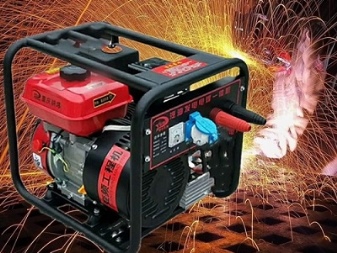
engine's type
Internal combustion engines for a wide variety of designs are divided into two large groups:
- four-stroke;
- two-stroke.
Four-stroke motors are complex in design and have less power per unit weight than others. But this is the most fuel-efficient type of internal combustion engine. Fuel is consumed twice as slowly (accordingly, the engine produces less power - but at the same time it burns out almost completely and transfers its energy to the consumer. Two-stroke motors are much simpler in design - they often do not even have a valve mechanism, so there is "nothing to break." turns out that part of the fuel literally "flies into the pipe".
In addition, a special fuel mixture is required to power such engines. To obtain it in the right proportion, gasoline is mixed with engine oil of a well-defined brand.
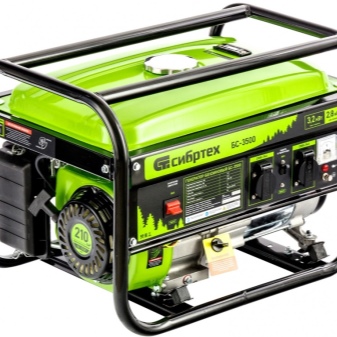
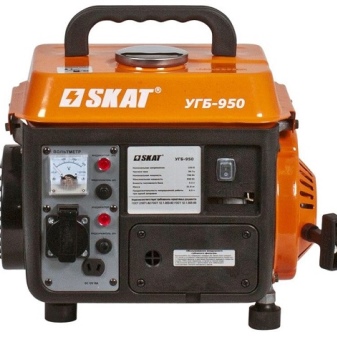
Any internal combustion engine heats up during operation and requires cooling. Powerful motors are usually cooled with water, which circulates through the thin channels of the motor, taking away heat well. The water itself cools in an air-blown radiator. The design is quite complex and heavy. A cheaper and lighter option is the cooling fins installed directly on the engine cylinders. Heat is removed from the fins by air, which is forcibly blown through the motor by a fan. The result is a very simple, lightweight and reliable design.
As a result, depending on the tasks, you can choose a powerful, expensive, heavy, but very economical four-stroke water-cooled engine or, conversely, prefer a cheap, light, compact, but capricious two-stroke air-cooled gas generator.
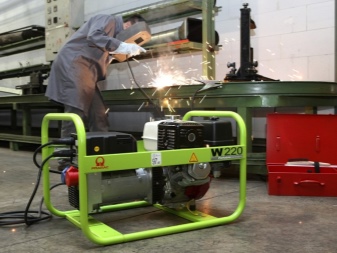
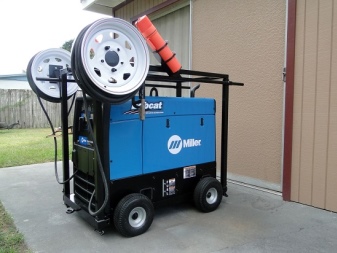
Versatility
If the autonomous power supply unit is planned to be used exclusively for welding, you do not have to worry about the presence of a 220 V output and the quality of the current in it. For the welder, it is much more important to have such special functions in the device, such as:
- "Hot start" (easier ignition of the arc);
- "Afterburner" (short-term work with increased current);
- "Insurance against sticking" (automatic reduction of current in case of danger of electrode sticking).
Nevertheless, if the gas generator has a standard high-quality power supply output of the household standard "220 V 50 Hz", it becomes more versatile.
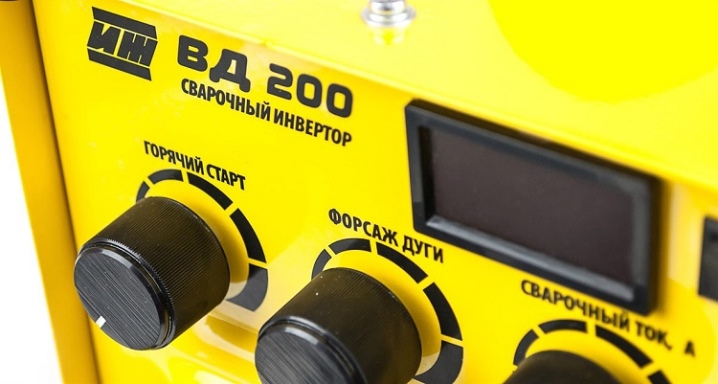
Such a unit can be used to power any electric tool:
- drills;
- grinders;
- jigsaws;
- punchers.
In addition, the "universal" generator will allow, if necessary, to easily change welding inverters, depending on the tasks facing the welder. Even in the event of a breakdown of the inverter or the generator itself, it will be easier to continue working by simply replacing the faulty device with a similar one - and this is much faster and cheaper than repairing a specialized device.
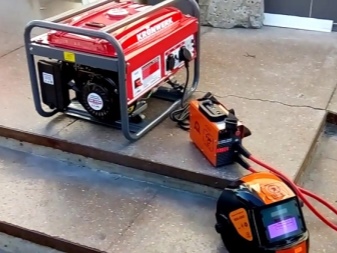

Care rules
The most popular models of gas generators - with two-stroke air-cooled motors - are practically maintenance-free. You just need to carefully monitor the cleanliness of all exposed parts (especially the radiator fins). Before each start-up of a generator of any design, it is imperative to check the serviceability of the fencing device (shields and anthers). Check the presence of all fastening elements and the tightening force of the screws (nuts). Pay attention to the serviceability of the insulation of the wires and electrical terminals.
Check the oil level in the engine crankcase regularly. For topping up, you need to use oil of strictly brands recommended by the manufacturer of the gasoline engine. Cheap and compact generators are usually manually started.
For such devices, the integrity of the starting cable and the smoothness of the starter should be monitored.
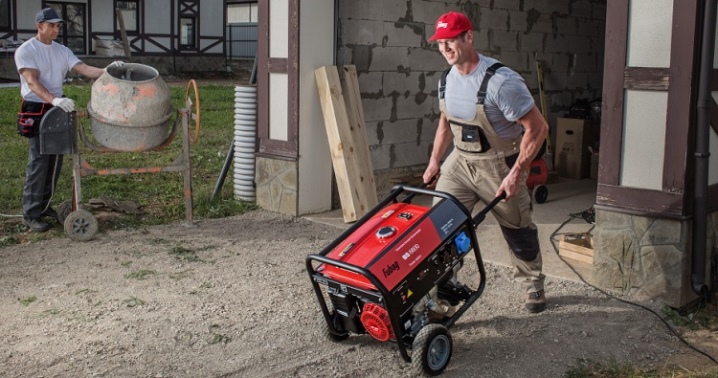
An electric starter motor is used to start the motor of heavy and powerful welding generators. For such units, you need to monitor the state of charge of the battery. In addition, the starter battery gradually deteriorates and requires replacement as capacity is lost. In any case, since the exhaust fumes from a gasoline engine are harmful to human breathing, it is best to use welding generators outdoors. In this case, it is necessary to provide protection against rain and snow. If you have to operate the gas generator indoors, you need to provide good ventilation.
Remember that 220 V electricity is life threatening! Always check the quality of the insulation of the welding inverter and the serviceability of electrical appliances (sockets, extension cords). Work in the rain or in rooms with high humidity is absolutely unacceptable.

In the next video, you will find a brief overview of the FORTE FG6500EW gasoline welding generator.













The comment was sent successfully.